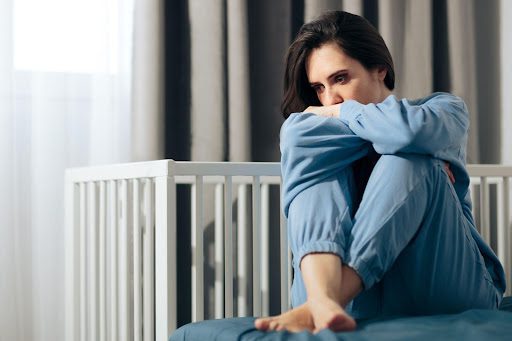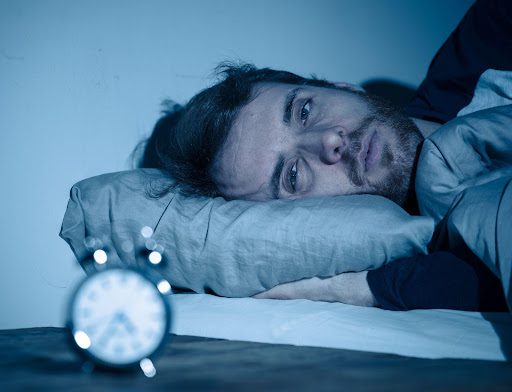Major depression is a common mental health condition, often recognized by symptoms of deep and unrelenting sadness, low energy, and a lack of interest in enjoyable activities. However, depression can present in multiple ways, and through various profiles.
Several distinct major depression subtypes have been identified, each with unique features and challenges. While individuals with different major depression subtypes may share similar core symptoms, a detailed assessment may be needed to clarify fewer common features and symptom patterns. This additional exploration may help individuals better understand their specific needs.
Read on to learn about the features, risk factors, and impacts of six common subtypes of major depressive disorder: melancholic, anxious, atypical, psychotic, seasonal, and postpartum depression.

25–30% of individuals with depressive disorders have melancholic depression, a subtype characterized by a low mood that persists regardless of circumstances, and whose symptoms are worse during the morning. Two other distinctive features of melancholic depression are anhedonia (an inability to enjoy things), and insomnia from waking too early.
Unfortunately, melancholic depression is generally less responsive to treatment, placebos, and social interventions than other depression subtypes. Compared to individuals with other types of depression, those with melancholic symptoms are less likely to go into remission and show less improvement even after several weeks of treatment. However, older tricyclic antidepressants may be effective for some and result in more significant symptom improvement than SSRI medications.
Studies also show that men are more likely to be diagnosed with melancholic depression than women, but biological factors appear to have a more significant role in determining risk. One example is cortisol, a hormone released into the body in response to stress. And while it can be elevated for reasons unrelated to depression, excessive cortisol levels have long been associated with melancholic depression.
Anxious depression is a condition characterized as a major depressive disorder with some features of anxiety. Individuals must either have a loss of interest in pleasurable activities, a low mood most of the time, or both. Other depressive symptoms may include negative thinking, feeling worthless, and thoughts of suicide.
Additionally, individuals must have at least two of the following five symptoms of anxious distress, including:
Anxious depression is a relatively new depression subtype to be discovered. It can appear similar to comorbid anxiety and depression. The difference is that depression is the primary diagnosis, and presenting anxiety symptoms do not fully meet the criteria for an anxiety disorder.
Research shows that anxious depression is somewhat common, with 54-78% of individuals with major depression also experiencing anxious distress. And the impact of this additional distress is significant, often resulting in more functional impairment, less response to treatment, and more negative effects on physical health than for individuals with non-anxious depression.
Deep Transcranial Magnetic Stimulation (Deep TMS™) is one FDA-cleared form of anxious depression treatment that has been found to be both safe and effective. During this treatment, a cushioned helmet, holding BrainsWay’s patented H1 Coil, is fitted onto the patient’s head. After activation, the coil safely delivers targeted pulses to regions of the brain associated with anxiety and depression symptoms. The treatment process itself is well tolerated, with no long-term or adverse side effects. Sessions are 20 minutes long, making them convenient to incorporate into a typical, weekly schedule over the course of several weeks.
Atypical depression is more common than its name suggests, with 15-30% of individuals with depression presenting with atypical symptoms. The definition of atypical depression varies among researchers and clinicians, but most agree that it features three key symptoms: mood reactivity, sensitivity to interpersonal rejection, and physical symptoms.
Individuals with atypical depression often have other co-occurring mental disorders, which can also negatively affect their depression outcomes. Some conditions that often co-occur with atypical depression include panic disorder, obsessive-compulsive disorder, generalized anxiety disorder, and bulimia.
Psychotic depression is a severe subtype of major depressive disorder featuring two primary symptoms of psychosis, delusions and hallucinations. Delusions are fixed, false beliefs that contradict reality, and hallucinations are visual or audio perceptions that appear real to an individual but are only created in their mind. While psychotic depression can be severe, psychosis itself is not related to depression severity and stands alone as a distinct feature of the subtype. Delusions and hallucinations may not always emerge during depressive episodes. But when they do, they can cause additional distress and potentially increase the risk of suicide during acute episodes of depression.
An accurate diagnosis is fairly straightforward for individuals who clearly present psychotic symptoms. However, individuals who do not reveal delusions or hallucinations to others, whether intentionally or not, may not get adequate treatment. Clinicians may look more closely for signs of psychosis when individuals do not respond as expected to antidepressants or when factors associated with psychosis appear, such as extreme agitation and measurable changes in specific brain regions.

Seasonal depression is a subtype of major depressive disorder occurring when seasons change, with an estimated 0.5-2.4% of the general population being affected. And among those diagnosed with major depression, 10-20% have seasonal symptom patterns.
90% of those with seasonal depression have a winter-pattern disorder, featuring oversleeping, overeating, and social withdrawal. Summer-pattern seasonal depression affects the remaining 10% with the opposite of the winter pattern, including insomnia, poor appetite, and restlessness.
The critical factor differentiating seasonal depression from major depression is a period of remission in the off-season months. Up to 40% of individuals with seasonal depression continue to have episodes during the off-season, necessitating a rediagnosis of a more chronic form of depression.
Light therapy is a primary component of seasonal depression treatment, along with traditional methods such as psychotherapy and antidepressant medication. Individuals using light therapy do daily treatments early in the morning, sitting in front of a bright light box for up to 30 minutes at a time throughout their depressive season.
Postpartum depression is a mood disorder that develops within the first year following pregnancy, affecting an estimated 6.5-12.9%. The “baby blues” is a brief period of adjustment that many experience within the first several days of giving birth, often including mood swings and feelings of sadness. However, these symptoms remit on their own and do not disrupt daily functioning as postpartum depression does.
Without treatment, postpartum depression can last for months, affecting the parent’s well-being and ability to care for their baby. Because postpartum depression is a subtype of major depressive disorder, it carries a risk of suicide, making screening and diagnosis a critical part of postpartum care.
Postpartum depression does not have one single cause, though dramatic hormonal changes that occur during the birth process likely play a significant role. Research shows that a previous history of depression, high-risk pregnancies, labor complications, younger age, and poor social support can significantly elevate risk.
Assessing for potential depressive subtypes is a valuable aspect of the diagnostic process. While all types of major depressive disorder share several primary symptoms, understanding what makes a subtypes distinction is vital for better recovery outcomes.